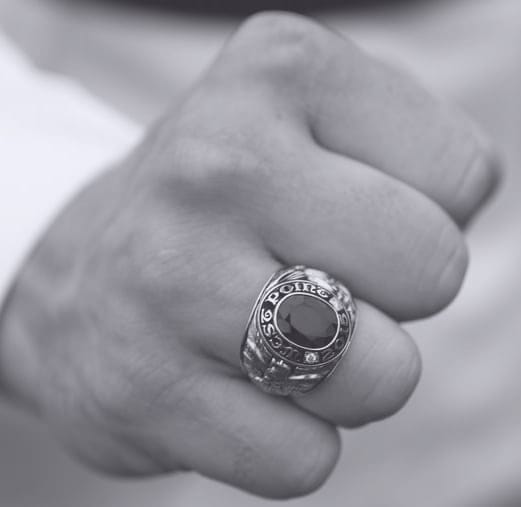Ring Knockers
In today’s military, they’re called “ring knockers.” You can recognize them almost immediately. When they enter a room, they somehow “knock their big gold class rings on the table” to quiet the room and let everyone know that they should be accorded certain privileges and authority — as regular officers. As academy grads, they were signaling that they were a cut above.
The best leaders today and during the Civil War reverse this. They use their “privileges” to increase the authority and position of others. They don’t claim an identity, they forge a fighting identity in others.
Jesus warned his ring-knocking disciples: “Don’t lead like the rulers of the Gentiles who exercise their authority over others. . . instead first be a servant of all.”
In other words, melt your gold rings and use the gold of your privilege & experience to enrich others.
The best fighting units at Gettysburg were made up of volunteers who felt like “regulars” and the leaders who made them feel that way.
Within a week of taking command of a brigade of volunteers, John Gibbon, West Point ‘47, ordered black-felt Hardee hats issued with ostrich plumes for his men. These expensive tall blocked and brimmed black hats featured a brass infantry bugle, a red Corp circle patch, and brass numbers on the front to indicate units and companies. A brass eagle badge held the brim up. The formal hat of the regular army. All the other volunteers in all the other brigades wore the standard issue kepi.
To lead volunteers well, Gibbon knew intuitively that you need to “treat” and “dress” volunteers as regulars. The effect was immediate.
A 2nd Wisconsin soldier wrote home: “We have a fine black hat nicely trimmed with a bugle and plate and ostrich feathers; and you can only distinguish our boys from the regulars, by our own good looks.”
Soon daily and rigorous drills transformed these volunteers into soldiers “who looked and marched and fought like U.S. Regulars.” When Gibbon’s Iron Brigade--the 1st Brigade of the 1st Division of the 1st Corps of the Union Army of the Potomac—charged onto McPherson’s Ridge at Gettysburg at 10 am, July 1st, 1863, the Confederate soldiers immediately retreated, yelling, “That ain’t militia, it’s those damn black hated boys.”
(Above by Jay Lorenzen)
Spotted In the Wild (by Jody)
I recently attended a medical conference at Seattle Children's Hospital and was greeted and checked in by a kind older gentleman at the registration table. He gave me a parking sticker and sent us all scurrying into the conference room. It was a gathering of the “whose who” from the leading experts nationwide on a particular condition. Treated with some of the most complex surgeries, the specialists are limited and esteemed by families and the broader medical community.
The microphone was passed all day from one brilliant surgeon to the next. Their PowerPoint presentations cited their predecessors in 10 pt font at the bottom of the slide. One particular doctor was mentioned and cited several times for ultimately being the first to change the course of treatment, which has since saved many lives. I only made note of it because, at the end of the day, they presented this doctor with a surprise lifetime achievement award from the organization. The crowd stood to honor him as everyone looked around the room, unaware he had been in attendance. Someone had to go out in the hall to find him. At the registration table.
He melted his rings and traded them for parking passes.
When looking for the best leaders, don’t look only to the loudest microphone or knocking ring.
Maybe check the guy happily working the registration table.



